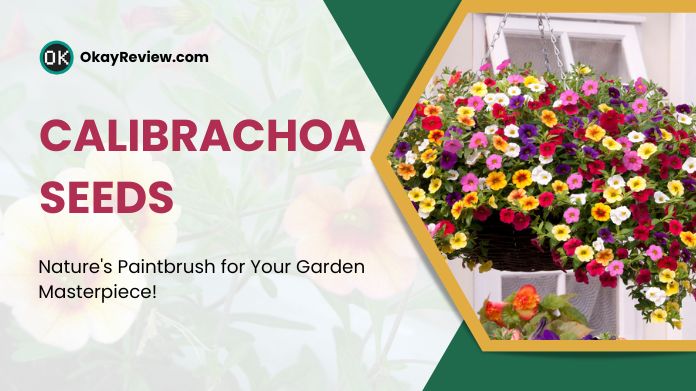Looking to add a burst of vibrant colors to your garden? Look no further than calibrachoa seeds!
These tiny powerhouses are popular among gardeners due to their gorgeous flowers and compact growth.
If you’re a seasoned gardener or just starting, calibrachoa seeds are an excellent way to enhance your outside environment.
Okayreview will review everything you need about calibrachoa seeds in this post, from their origins and types to planting and care instructions; otherwise, these plants are getting wilting or drooping.
So, get ready to unleash the beauty of Calibrachoa in your garden and create a picturesque paradise that will leave everyone in awe.
Let’s dive in!
Table of Contents
Calibrachoa Seeds: A Closer Look
Calibrachoa, also known as million bells or trailing petunia, is a profuse blooming plant that blooms from early spring until late autumn.
Although in Zones 9-11, it exhibits winter hardiness, gardeners typically cultivate it on an annual basis.
Calibrachoa’s trailing stems are covered in bright, petunia-like blooms, making it ideal for hanging baskets, pots, or ground cover.
Growing Calibrachoa from seed is now possible because of the development of Kabloom series seeds.
It likes well-drained soil, as well as consistent watering and feeding. Furthermore, because these plants are self-clean, they require little upkeep.
How to Collect the Calibrachoa Seeds?
1. Collection
Look for seed pods beneath the blossoms to harvest calibrachoa seeds. Well-pollinated blooms will produce seed pods that can be dried on the plant.
Just crack apart the dried pods to gather the small, black calibrachoa seeds. To release the seeds, pluck or pinch off dried seed pods and smash them over paper.
Remember that not all calibrachoa cultivars yield seeds, so look for seed pods when the flowering season ends. Depending on the hardiness zone, hybrid calibrachoas can be annual or perennial.
2. Storage
A. Breaking and Crushing Pods
Breaking and crushing pods can be a useful way to gather seeds. You may conveniently extract the small seeds by picking the seed pods and gently breaking them over the paper.
Shake the pods to get the seeds to fall onto the paper. You may also crush the pods to retrieve the seeds if necessary.
This method makes it easier and faster to extract seeds from the pods of your selected plants.
B. Drying Pods
Drying pods is important in keeping seeds or utilizing them for other purposes. If the pods need to be sufficiently dry, you can continue drying them for another week or longer, depending on their moisture level.
Arrange the pods in a single layer into a shallow cardboard box and store it somewhere dry and warm.
This favorable atmosphere will aid in further drying and guarantee that the pods attain optimum dryness.
C. Transferring
To store calibrachoa seeds, remove debris and carefully deposit them into a labeled jar or envelope.
Alternatively, transfer the seeds to the container by tapping them onto folded paper. For propagation, ensure a dry, dark, and cold storage environment until early spring.
How to Grow Calibrachoa Seeds?
Growing Calibrachoa from seed may be a fascinating experience, with the possibility of seeing magnificent flowers in as little as four months.
This detailed tutorial will lead you through successfully cultivating Calibrachoa seeds, from sowing to transplanting.
1. Starting Seeds Indoors for Early Blooms
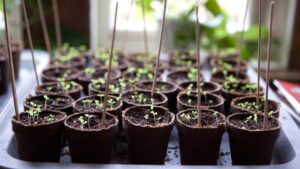 To enjoy an early flowering season, grow your Calibrachoa seeds in a greenhouse.
To enjoy an early flowering season, grow your Calibrachoa seeds in a greenhouse.
This method gives you more control over the germination process, guaranteeing favorable growing circumstances.
Maintain a steady internal temperature of 70°F (21°C) and supplement illumination to grow your Calibrachoa seedlings efficiently.
2. Sowing Calibrachoa Seeds
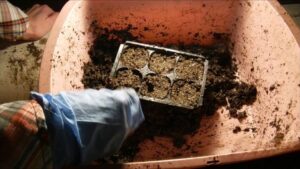 Press one seed lightly on top of a seed flat filled with your choice of growth media. Make sure the seed has excellent contact with the soil.
Press one seed lightly on top of a seed flat filled with your choice of growth media. Make sure the seed has excellent contact with the soil.
Bottom watering is advised for best germination. Maintaining the soil’s moisture level is also critical.
3. Providing Optimal Growing Conditions
 Adjust the growing conditions as your Calibrachoa seedlings develop. It is essential to provide 18 hours of rising light at night and 8 hours of darkness to promote healthy growth.
Adjust the growing conditions as your Calibrachoa seedlings develop. It is essential to provide 18 hours of rising light at night and 8 hours of darkness to promote healthy growth.
To ensure optimal results, maintaining a steady interior temperature is crucial.
Some gardeners even utilize a heating pad to achieve the ideal temperature of 70°F (21°C) for your Calibrachoa plants.
4. Feeding and Watering
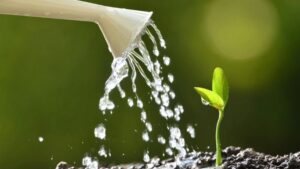 Begin feeding the seedlings with a slow-release fertilizer sprinkled into the potting soil when they are approximately a month old.
Begin feeding the seedlings with a slow-release fertilizer sprinkled into the potting soil when they are approximately a month old.
Calibrachoa is a strong feeder. Thus, it must be fed regularly throughout the growing season.
To avoid waterlogging, make sure the soil has sufficient drainage. When the top inch of soil becomes dry, water the plants.
5. Transplanting and Hardening Off
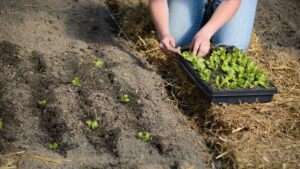 It is essential to progressively harden off your Calibrachoa seedlings before transplanting.
It is essential to progressively harden off your Calibrachoa seedlings before transplanting.
Begin by exposing them to outside circumstances for brief periods of time, gradually increasing the duration over the course of a week or two.
It is okay to transplant them into the garden once the fear of frost has gone and overnight temperatures are consistently over 50°F (10°C).
This progressive approach assists seedlings in adjusting to their new surroundings and increases their chances of prospering.
6. Soil Moisture and Maintenance
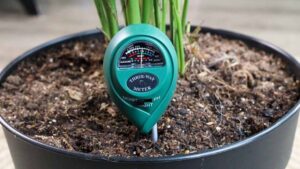 Calibrachoa enjoys damp soil but not wet soil. Waterlogging may be avoided with proper drainage.
Calibrachoa enjoys damp soil but not wet soil. Waterlogging may be avoided with proper drainage.
Water the plants when the top inch or so of soil becomes dry.
Million Bells are heat, humidity, and drought resilient but need frequent watering and feeding for the best development.
7. Self-Cleaning and Low Maintenance
 Calibrachoa plants are self-cleaning, which means they don’t need deadheading.
Calibrachoa plants are self-cleaning, which means they don’t need deadheading.
Spent blooms naturally fall off as they bloom, making them minimal care in flower management.
You may successfully cultivate Calibrachoa seeds and enjoy their beautiful flowers throughout the growing season if you follow these guidelines and provide the proper care.
Prepare to be amazed by the beauty and allure of these self-cleaning, low-maintenance plants in your yard or containers!
Takeaway!!
Calibrachoa seeds are a colorful and beautiful addition to any garden or container. These small marvels are guaranteed to dazzle with their bright flowers and cascading growth.
You may have a healthy calibrachoa garden by following the easy planting procedures, watering, and providing appropriate sunshine.
Enjoy the beauty and simplicity of Calibrachoa in your garden!

